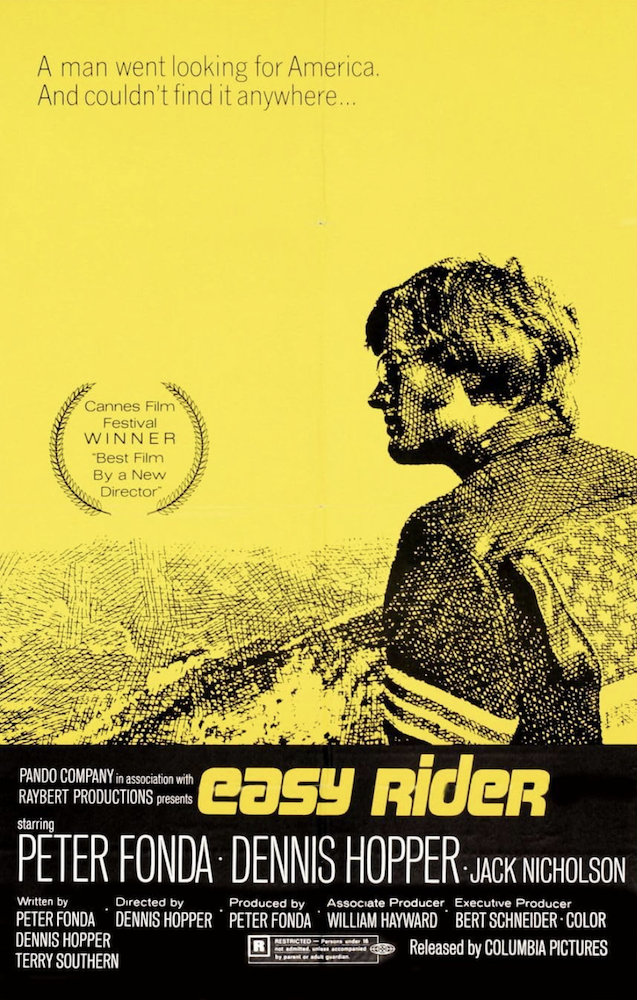posted: July 18, 2024
tl;dr: Watching Easy Rider today is like opening a time capsule...
I was too young to see Easy Rider when it was first released in 1969. I consider myself to be on the leading edge of the GenX generation, a position which I was happy to see confirmed by William Strauss and Neil Howe in The Fourth Turning. The two lead characters in Easy Rider, Captain America (Peter Fonda) and Billie (Dennis Hopper, who also directed the movie), are Boomers. They smoke marijuana and take LSD, spend time at a commune, and most importantly prioritize freedom above all else. The conflict this causes with the squares, representing traditional, mainstream American society, provides the dramatic tension in the movie.
I first watched Easy Rider when I was either in high school or, more likely, college. Cornell Cinema used to bring in classic and cult films and screen them in one of the larger lecture halls on campus, and that’s probably where I saw it. Or perhaps I rented it and watched it on a VCR and cathode-ray tube television. I do know that I saw it before the cross-country motorcycle trip I took after college graduation. My mom thought the ending of Easy Rider was another bad omen for a risky journey, and she feared how my buddy and I would be treated in the South. The South, to Yankees such as her, is anything south of the Mason-Dixon line, meaning south of Pennsylvania. I tried to assure her that my buddy and I didn’t look like long-haired hippies: we looked exactly like what we were, which is a couple of college schoolboys out on a big adventure. I told her we’d be polite and try not to upset the locals. We had, of course, no issues at all.

Watching Easy Rider in 2024, fifty-five years after it was released, is like opening a time capsule. The movie truly does chronicle a certain time, place, and culture: the hippy, druggy Sixties. That time is long past, the culture has evolved, and many of the man-made structures have been replaced, although the natural geography of the American West, which is gorgeously captured in the movie (albeit in grainy resolution), remains. I’ve even visited one of the buildings in the opening credits of the movie, the motel where the proprietor refuses to rent Captain America and Billie a room because he doesn’t like their looks. At the time of the movie it was a small gas station west of Flagstaff on Route 66 that was made up to look like a motel. It is now closed with some Easy Rider memorabilia on the inside. Route 66 itself is no more, although sections of it remain. Once again, man-made structures change and are replaced.
Bikers were just a subset of the Sixties hippy culture. The main theme of the movie is the clash of cultures during that time frame. The storyline is actually a simple one that is easily followed. The ending, which bikers don’t like, is heavily foreshadowed, and the movie could not have ended any other way. Captain America realizes towards the very end that he and Billie have fallen into a trap, although Billie is unaware. Sixties hippy culture was ultimately unsustainable, and the problems with it are sometimes of its own making, as is shown in the commune scenes. The big score that gives Captain America and Billie their freedom to roam the country is also unsustainable. Achieving a big score that can provide the money to live a completely free life is still a goal of some in society, through various means. But ultimately we all have to live together in this country, in a sustainable way.
I consider Easy Rider to be a classic movie, and it should continue to be watched for decades to come. It isn’t a comprehensive view of its time and place, but it is worth watching to see what the culture was like in the late 1960s.